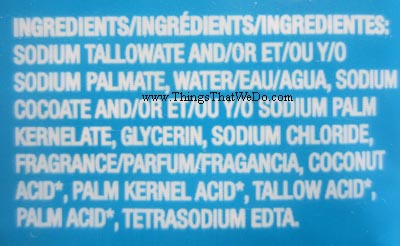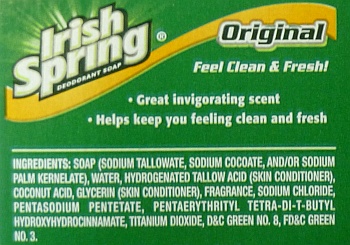Anstarx
Well-Known Member
I'm not sure if I should post this question here. If not, please notify me.
I looked up some common soaps' ingredients, trying to analyze it for a friend and was a bit confused by the oil acids I see.
Take ivory soap for example.

I can see that the soap is basically made of coconut, palm kernel, tallow, and palm oil reacting with lye, plus some additive like fragrance and EDTA. I was not so sure about the coconut acid, tallow acid, and other acids that I see. Are they just the fatty acids from the oils?
I checked another common soap I can think of: Irish Spring.

This one also have oil acids like hydrogenated tallow acid.
I looked up these ingredients in google and could only find these are derived from the corresponding oils and are emollients.
I have a hypothesis: are these the superfats? It's kinda funny to think about but maybe the commercial soap industry also use superfat or lye discount during manufacturing like us? Really curious
I looked up some common soaps' ingredients, trying to analyze it for a friend and was a bit confused by the oil acids I see.
Take ivory soap for example.

I can see that the soap is basically made of coconut, palm kernel, tallow, and palm oil reacting with lye, plus some additive like fragrance and EDTA. I was not so sure about the coconut acid, tallow acid, and other acids that I see. Are they just the fatty acids from the oils?
I checked another common soap I can think of: Irish Spring.

This one also have oil acids like hydrogenated tallow acid.
I looked up these ingredients in google and could only find these are derived from the corresponding oils and are emollients.
I have a hypothesis: are these the superfats? It's kinda funny to think about but maybe the commercial soap industry also use superfat or lye discount during manufacturing like us? Really curious




